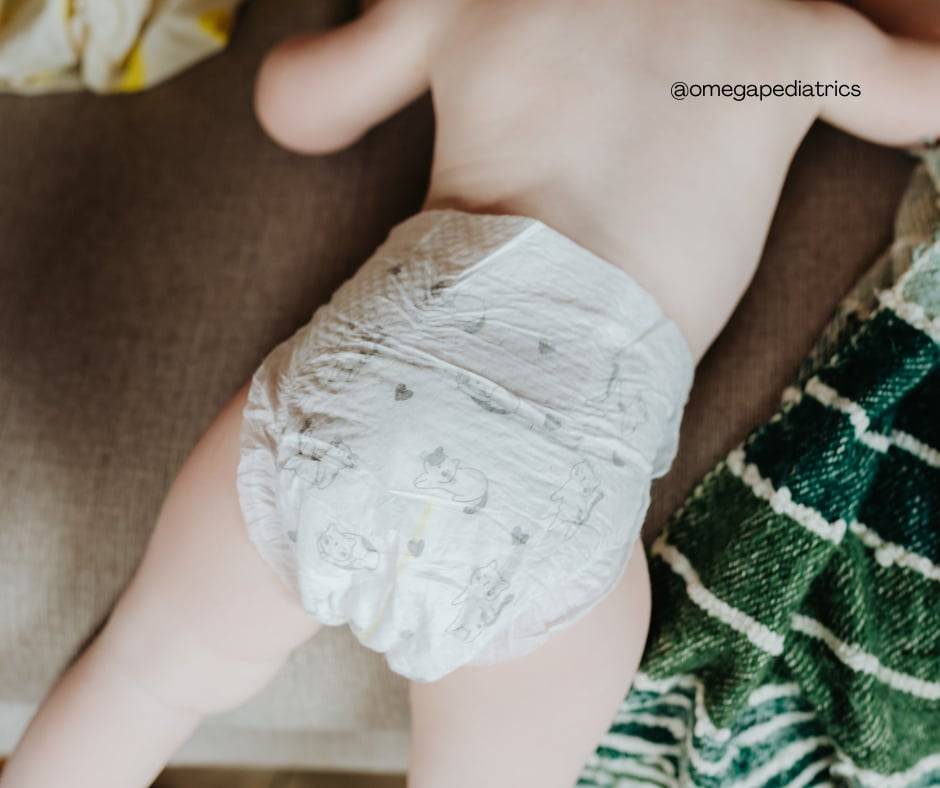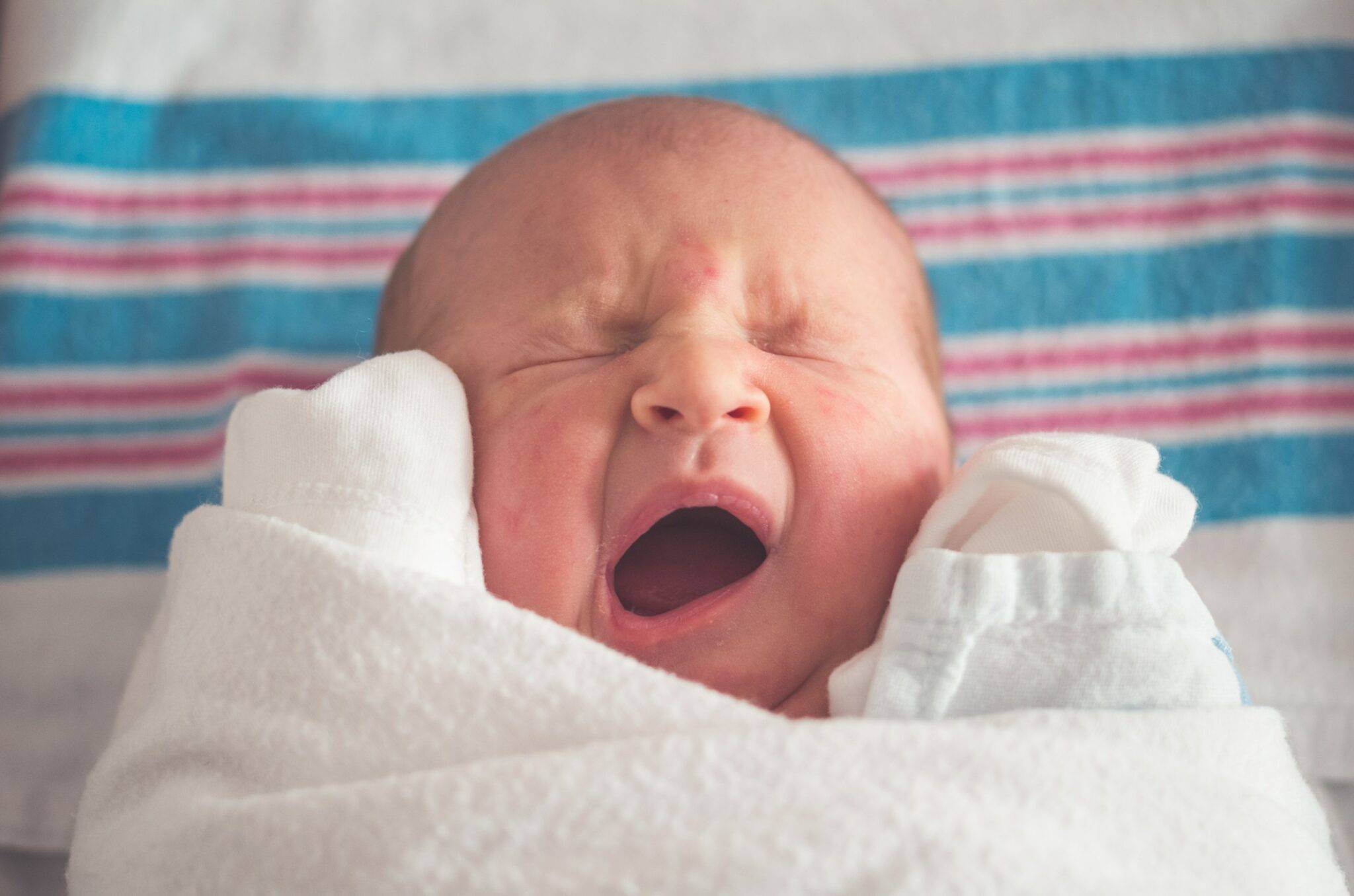Table of Contents
Circumcision has been a prevalent surgical procedure performed on male infants. Although it’s a personal choice whether or not to circumcise a newborn, ensuring the recovery period prioritizes the infant’s welfare and ease is essential.
In this article, we will delve into different approaches and methods to alleviate post-operative pain and discomfort in newborn circumcision. Thus, helping parents navigate this crucial phase with confidence and care.

What Happens During Newborn Circumcision?
Infant circumcision is a surgical procedure; hence, it should be done under legitimate conditions. Only a qualified and experienced medical practitioner will execute it. This includes pediatricians, neonatologists, urologists, and pediatric surgeons.
You might wonder what happens during circumcision. The foreskin covering the head of the penis is carefully cut away. Removal may involve a surgical blade or clamp. To alleviate any discomfort, the genital area is sanitized and desensitized via a local anesthetic.
What Happens After a Newborn Circumcision?
After the circumcision, newborns may experience some level of discomfort and pain. Nonetheless, various techniques may assist parents in managing their baby’s distress to encourage recovery.
Your newborn can’t articulate what he feels; hence, it’s important that you be keen on the symptoms. In the succeeding sections, we list the indicators and how to manage these symptoms. The ultimate goal is to make your newborn comfortable.
Symptoms of Post-Circumcision Pain and Discomfort
Parents and healthcare professionals have observed a variety of behavioral changes in infants following circumcision. These changes can be distressing for both the baby and the caregivers.
Crying
This is one of the most noticeable signs. The baby may cry more frequently and intensely than usual. Sally Hughes, an obstetrical nurse, notes that circumcised infants often scream when laid on their stomachs or when their diaper is wet, behaviors not typically seen in non-circumcised babies.
Disrupted Sleep
The baby’s sleep patterns may be greatly affected. They may have difficulty falling asleep or staying asleep. The overall quality of sleep is compromised. It is important to provide comfort and reassurance to help them rest.
Additionally, studies have found significant differences in sleep patterns among circumcised infants. Research indicates that these disruptions are not isolated incidents but rather common occurrences following the procedure.
Irritability
Newborns may become more irritable than usual. They will be fussy, restless, and difficult to soothe.
This increased irritability is further supported by findings that show changes in infant-maternal interaction during the first twenty-four hours after circumcision. For instance, both breast- and bottle-fed infants have exhibited deteriorated feeding behavior post-circumcision. These behavioral changes are not just limited to irritability but extend to other actions, especially noticeable on the day following the procedure.
Additional Behavioral Changes
Other behavioral differences have been observed on the day following circumcision. These include changes in feeding patterns and more pronounced fussiness. Recognizing these changes helps caregivers better understand the scope of how circumcision impacts their infant’s immediate well-being.
By blending observed behaviors with research-backed findings, we can gain a fuller understanding of how circumcision affects infants. This holistic view underscores the importance of providing comfort and support during this critical time.
Decreased Appetite
Babies may exhibit a decrease in appetite. They may show reluctance to feed or have shorter feeding sessions. In this aspect, it’s essential to monitor their hydration and nutritional intake. The irritability and discomfort can also cause these infants to nurse poorly, further complicating their feeding schedules.
Changes in Urination
The baby’s urine flow might be affected after circumcision. They may experience difficulty urinating or have a weaker stream. If there are signs of urinary retention or an inability to urinate, they should be promptly evaluated by a healthcare professional.
Increased Sensitivity
The circumcision site can become more sensitive, leading to heightened sensitivity when touched, especially during diaper changes. The baby may react strongly to any contact with the area.
Broader Implications
The persistence of specific behavioral changes implies the presence of memory and stress. These disruptions can affect the development of parent-infant bonding and feeding schedules, adding to parental stress. Understanding these potential changes can help caregivers provide better support and comfort for their infants during this challenging period.

How to Manage Pain and Discomfort at Home
Since newborn circumcision is typically done a day before hospital discharge, it naturally follows that aftercare mostly takes place at home. As a parent, it’s essential to learn how to manage the pain after the procedure to make your newborn comfortable.
Below are some useful tips for soothing the baby’s discomfort at home:
1. Follow the Doctor’s Instructions
The first and foremost step to ensuring proper after-circumcision care is to follow the doctor’s instructions carefully. They will provide specific steps on how to care for the circumcision site to alleviate pain or discomfort.
Make sure you understand the instructions and ask questions to clarify any doubts that you may have.
2. Give Pain Medication
Your doctor may prescribe pain medication for the relief of your baby’s discomfort. Over-the-counter pain relievers, such as acetaminophen, are recommended. Ensure that you follow the prescribed dosage and timing instructions.
Always consult your doctor beforehand when giving medications, especially to a newborn.
3. Keep it Dry
It’s crucial to keep the circumcision area clean to prevent infection and hasten the healing process. Gently clean the area with warm water and mild soap for every diaper change. Pat dry with a clean towel; avoid rubbing or applying any pressure.
The circumcision site should always be kept dry. A wet surface induces bacterial growth, thus resulting in infection or irritation.
4. Apply Sterile Dressing
Your doctor may recommend applying a sterile dressing to the circumcision site to help protect the wound and keep it clean. Ensure that you follow the instructions for changing the dressing and maintaining proper hygiene.
5. Use a Barrier Cream
Protect the circumcision site by applying a barrier cream or petroleum-based ointment, such as petroleum jelly. This creates a protective layer or barrier to prevent the diaper from rubbing against the baby’s sensitive skin, thus averting friction and irritation.
Nevertheless, consult with your doctor before using any creams or ointments, especially for a newborn.
6. Use Loose-Fitting Clothes
Choose loose-fitting clothes for your baby to minimize friction and irritation around the circumcision site. Avoid tight diapers that can rub against the wound.
7. Utilize Comfort Measures
Comfort measures are also beneficial for your baby by distracting them from the pain. Holding your baby, gentle cuddling, rocking motions, or swaddling promotes relaxation and provides a soothing effect. A pacifier or breastfeeding can also provide additional comfort.
Some parents also use soothing techniques such as soft music or white noise. All these divert your baby’s attention from the pain they’re experiencing.
8. Monitor for Signs of Infection
It’s important to check the circumcision site for possible signs of infection. These include increased redness, discharge, swelling, and a foul odor. It’s crucial to promptly seek medical attention if any of these indications are detected.
9. Follow-Up Appointments
Schedule and attend any follow-up appointments recommended by your doctor. They will assess the healing progress and provide further guidance if needed.
Bear in mind that each baby is unique. The pain tolerance is distinctive. Have a watchful eye and be responsive to your baby’s needs during this healing process. If any worries or doubts arise, reach out to your physician for further support and advice.
When to Seek Medical Attention
Parents and caregivers should closely monitor the circumcision site and keep it clean. Proper hygiene and care can help prevent complications.
Bleeding
One of the primary concerns after a circumcision is bleeding. After the procedure, a little bleeding or oozing is typical for the first few hours. However, longer and more substantial bleeding requires medical attention.
Excessive bleeding may stem from a surgical site problem or a bleeding disorder that requires immediate medical attention.
Infection
Another potential complication is infection. It is imperative to seek medical attention if there are signs of infection, such as heightened redness, swelling, or discharge resembling pus from the circumcision site.
Although infections can be cured with antibiotics, ignoring the symptoms could lead to widespread infection or the emergence of additional complications.
Severe Pain and Distress
Pain and discomfort are common after a circumcision. But if the baby seems to be in severe pain or shows signs of distress that cannot be alleviated with pain medication, it is advisable to consult a healthcare provider.
Persistent crying, refusal to feed, or noticeable changes in behavior may indicate a problem that requires medical evaluation.
Other Symptoms
In some cases, complications may arise during the healing process. Parents should seek medical attention if the wound does not appear to be healing properly. Additionally, if there’s excessive swelling, a foul odor, or a high fever, an immediate medical evaluation is necessary.
Give Emotional Support to Parents
The process of making an informed decision becomes less daunting when parents have a support system that is non-judgmental and understanding.
Healthcare Professionals
For parents contemplating newborn circumcision, healthcare professionals act as a vital source of emotional support. Doctors, nurses, and midwives play a crucial supportive role by providing information, answering questions, and addressing concerns.
These healthcare professionals are skilled at explaining the possible risks and benefits of circumcision. Their advice and guidance are based on medical evidence.
Family and Friends
Parents can also seek emotional support from their partners, family, and friends. Talking openly about their thoughts and concerns about circumcision can be cathartic. They provide a listening ear, offer different perspectives, and share their own experiences, if applicable.
Online Communities
Support groups and online communities can also be valuable resources for parents. Conversing with other parents who have faced or are currently facing the same decision-making journey can be comforting.
Online forums and discussion boards allow parents to access a wide range of opinions and perspectives. These groups provide a platform to ask questions, share stories, and gain insights from people who have firsthand experience with circumcision.

Behavioral Changes in Circumcised Infants: Perspectives from Mothers and Nurses
Mothers and nurses who interact with circumcised infants have reported noticeable behavioral changes post-procedure. According to several accounts, these infants exhibit significantly higher levels of irritability. Nurses observing circumcised babies have noted that these infants tend to cry more intensely, particularly when placed on their stomachs or when their diapers are wet. This heightened sensitivity contrasts with the generally calmer behavior of non-circumcised infants in similar situations.
Key Observations:
- Increased Crying: Circumcised infants scream more often compared to their non-circumcised counterparts.
- Sensitivity to Wet Diapers: Unlike typical infants, circumcised babies are more likely to cry due to wet diapers.
- Feeding Difficulties: These infants often experience trouble nursing, which can lead to additional stress for both the baby and the mother.
These behavioral differences raise important considerations for caregivers and medical professionals alike, highlighting the potential impact of circumcision on an infant’s early life experiences.
Make Your Baby Safe and Comfortable While Recovering from Circumcision
Managing pain and discomfort after newborn circumcision requires a combination of proper care, pain relief measures, and attentive observation. By following the guidelines provided, parents can help ensure their baby’s comfort and facilitate a smooth recovery process.
Always consult with your healthcare provider for any concerns or doubts. With patience, support, and informed caregiving, you can help your newborn navigate this temporary phase of circumcision with minimal discomfort, fostering a healthy start to life.
FAQ
What’s involved in newborn circumcision?
It’s a surgical procedure where the foreskin is removed under sterile conditions by a qualified medical practitioner, typically using a surgical blade or clamp, and with a local anesthetic to reduce discomfort.
What are signs of post-circumcision discomfort?
Common signs include crying, irritability, swelling, discharge or bleeding, redness, decreased appetite, changes in urination, disrupted sleep, and increased sensitivity.
How to manage pain at home after circumcision?
Follow the doctor’s instructions, give prescribed pain medication, keep the area clean and dry, apply sterile dressing and barrier cream, use loose-fitting clothes, comfort measures like cuddling, monitor for infection, and attend follow-up appointments.
When to seek medical help after circumcision?
Seek help if there’s excessive bleeding, signs of infection, severe pain or distress, persistent crying or refusal to feed, changes in behavior, or complications during healing.
How to find support during and after circumcision?
Seek support from healthcare providers, family, friends, and online communities for information, advice, and emotional assistance.
What Do Studies Say About the Pain Level of Circumcision?
Intensity of Pain
Research consistently indicates that circumcision causes significant pain and stress for newborns. Studies have shown that circumcision leads to markedly higher levels of behavioral distress and elevated blood cortisol levels when compared to other medical procedures for infants.
Heart Rate and Cortisol Levels
One notable observation is the dramatic increase in heart rate during the procedure, with documented cases showing spikes of up to 55 beats per minute—a relative increase of approximately 50%. Furthermore, the level of blood cortisol, a stress hormone, can skyrocket to three to four times the pre-circumcision levels. These metrics underscore the severe stress that the procedure inflicts on newborns.
Behavioral Responses
Newborns exhibit clear signs of distress during circumcision. Common reactions include vigorous crying, trembling, and in some instances, the development of cyanosis (a bluish discoloration) due to prolonged crying. These behavioral responses highlight the newborn’s acute pain and anxiety.
Expert Conclusions
Researchers from various institutions, including the University of Minnesota
’s Institute of Child Development, have described circumcision as “among the most painful procedures performed in neonatal medicine.” These experts conclude that the pain experienced is both severe and persistent. Follow-up studies affirm these findings, noting that the intensity of the pain would be intolerable for older patients.
Medical Perspective
The medical community often uses circumcision as a model to study pain and stress responses in newborns. According to experts in pediatric health, the procedure involves forcefully separating and cutting the foreskin, which is inherently painful for the infant. This makes circumcision not only a physical trauma but also a significant psychological stressor for newborns.
Effectiveness of Anesthesia in Reducing Circumcision Pain
The use of anesthetics during circumcision can indeed help in reducing pain, but it does not completely eliminate it. While some physicians might abstain from using any anesthetics—even after learning about their application—those who do can provide significant pain relief to the patient.
Types of Anesthetics and Their Efficacy:
Topical and Local Anesthetics: These can numb the area to a degree but often fail to alleviate all pain. Their effectiveness is generally limited to the procedure itself, with reduced impact on post-operative pain.
Injectable Anesthetics: Administered directly into the penis, these provide more substantial pain relief. However, even the best techniques fall short of eliminating discomfort entirely, especially as the anesthetic’s effect wanes before the post-operative pain subsides.
In summary, while anesthesia can significantly mitigate pain during circumcision, it is not a foolproof solution. Injectable anesthetics offer more effective pain relief than topical alternatives, yet some pain is often unavoidable.



